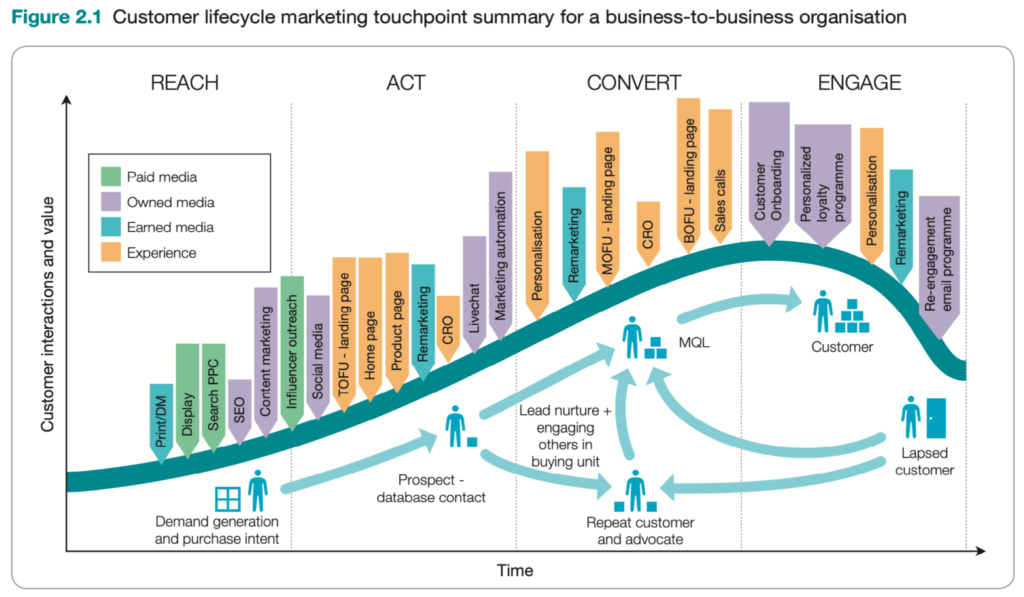![]()
Did you know that over 70% of businesses credit digital marketing for their financial success? That’s a massive nod to the power of online strategies in today’s market.
In this whirlwind world of likes, shares, and viral content, getting your hands on fresh digital marketing insights isn’t just nice—it’s essential.
In this article, we’re diving deep into what makes the internet tick for businesses, from the latest trends that are dominating screens around the globe to tried-and-true tactics that have stood the test of time.
Table of Contents
Digital Marketing Evolution
Consumer Behavior
The digital age has significantly altered consumer behavior. Now, more people shop online than ever before. This shift isn’t just about convenience; it’s about preference too. Consumers now seek personalized content that speaks directly to their needs and interests.
Social media platforms have become key in product discovery. People often find new items or services through ads or posts shared on these networks. This change means businesses must adapt their digital marketing strategies to meet consumers where they are: online.
A recent study by Shopify in 2023 revealed that 58% of global consumers now prefer to conduct their shopping online rather than in-store. This significant shift underscores the need for businesses to prioritize their online presence and tailor their digital marketing strategies to meet consumer preferences in the digital age.
TV to Online Video
Traditional TV viewership is on the decline. Instead, subscriptions to streaming services are climbing rapidly. People prefer watching videos when and where they want, not according to a broadcast schedule.
Online video ads engage viewers more effectively than traditional TV commercials do. They can be targeted more precisely and viewed across different devices, making them a powerful tool for advertisers in the digital era.
Multiscreen Behavior
Today’s consumers use multiple devices simultaneously or switch between them throughout the day. This multiscreen behavior includes shopping across different devices which emphasizes the need for a seamless brand experience no matter the screen size or platform.
Businesses must ensure their websites and ads function well on all types of devices – from smartphones to laptops – providing a consistent user experience everywhere.

Micro-Moments
Mobile searches trigger decision-making moments known as micro-moments. These are times when consumers think, “I want to buy this.” Being present with relevant information during these moments is crucial for brands aiming for success in digital marketing.
Consumers expect immediate answers in their micro-moments. If your business can provide those answers quickly through effective SEO practices and mobile-friendly content, you’ll win over many potential customers.
Importance of Insights
Strategy Shaping
Data-driven decision making is crucial in today’s digital marketing landscape. Businesses that leverage insights from their data can make informed decisions. This leads to better strategies and outcomes. For example, analyzing customer behavior helps tailor marketing messages.
Adapting to market changes quickly is essential for staying competitive. Digital channels integration into the overall marketing strategy ensures a unified message across all platforms. It enhances brand presence and engagement.
Real-Time Inspiration
Social media has transformed how consumers discover products and make purchase decisions. Spontaneous purchases are often influenced by what people see on social media feeds, live streams, and stories. These platforms offer unique opportunities for real-time engagement with audiences.
Responding swiftly to trends can significantly boost sales. Brands that capitalize on viral moments or trending topics create buzz around their products or services instantly.
For example, the Dongbei floral pattern shirt went viral, leading to a surge in sales by various sellers.

Mobile Speed
The impact of loading speed on user experience cannot be overstated. Studies show that high bounce rates result from slow-loading mobile sites. Optimizing websites for mobile devices is not just about aesthetics; it’s a critical ranking factor in SEO too.
Fast-loading sites offer a smoother browsing experience, leading to higher conversion rates and improved customer satisfaction levels.
Voice Assistance
The use of voice search queries has seen an exponential rise recently, changing how SEO strategies are formulated. Optimizing content for conversational keywords makes it easier for voice assistants like Siri or Alexa to find your site during searches. Integrating voice search into SEO strategies ensures businesses stay ahead in this evolving digital landscape.
A report by Gartner predicted that 30% of all browsing sessions would include voice search by 2020. While this prediction has materialized into the current landscape, it highlights the growing prevalence of voice assistants in consumer search behavior, urging businesses to optimize for voice search to stay relevant.
Marketing Techniques Overview
Key Concepts
Understanding the importance of SEO and content marketing is crucial. SEO boosts visibility online. It helps websites rank higher in search results. Content marketing engages and retains customers by providing valuable information.
Both strategies rely on high-quality content tailored to the audience’s needs. This approach builds trust and authority in a brand.
Analytics play a vital role in strategy refinement. They provide insights into what works and what doesn’t. Marketers can adjust their strategies based on data-driven decisions.
Customer experience on digital platforms is paramount. A positive experience leads to higher engagement and loyalty. Brands must ensure their digital presence is user-friendly and responsive.
Media Channels
Diversifying across social media, email, and search engines maximizes reach. Each channel has its strengths.
- Social media excels at engagement.
- Email personalizes communication.
- Search engines drive traffic through SEO.
Tailoring content to specific channel strengths ensures effectiveness. For example, visual posts work well on Instagram, while detailed guides are better suited for emails or blogs.
Consistent messaging across all media channels reinforces brand identity. It creates a cohesive brand experience for customers.
7Ds Framework
The 7Ds framework includes Digital devices, platforms, media, data, technology driving marketing strategies. This framework highlights the importance of integrating various digital aspects into marketing strategies.
Personalization through digital data analysis stands out as a key benefit. Marketers can tailor messages directly to consumer preferences using data collected from digital interactions.
Direct interaction with consumers via digital devices enhances customer relationships. It allows brands to respond quickly to feedback or inquiries.

RACE Framework
The RACE Framework, consisting of Reach, Act, Convert Engage, guides marketers through each stage of interacting with potential customers online.
Integration of all stages ensures cohesive strategy implementation. Each stage flows seamlessly into the next for maximum impact.
Measurement at each stage allows for continuous improvement. Marketers can identify areas that need adjustment for better results next time around.

Leveraging Data for Strategy
First-party Insights
First-party insights come directly from your audience’s actions and preferences. They are gold mines for creating personalized marketing strategies. Unlike data bought from others, these insights stem from your direct interactions with customers. This means they’re more accurate and relevant.
Businesses collect first-party data through their websites, apps, or physical stores. For example, an online retailer might track what products a visitor views to suggest similar items in the future. This approach not only enhances user experience but also boosts sales by making recommendations that users find genuinely useful.
The main advantage of first-party data is its high relevance to your specific audience. It allows marketers to tailor their messages precisely, increasing engagement rates significantly. However, collecting this type of data requires robust privacy measures to ensure customer trust.
Third-party Insights
Third-party insights provide a broader view of the market. These are collected by external agencies or platforms and can offer valuable information on industry trends and benchmarks.
While third-party data may lack the precision of first-hand information, it helps fill gaps in understanding broad market behaviors. For instance, a business might use third-party insights to compare its performance against industry averages or identify emerging trends that could impact its strategy.
Combining both types of data gives companies a comprehensive overview of their position within the market landscape and beyond it:
- First-party data offers deep personalization.
- Third-party insights help benchmark against broader trends.
Data Interpretation
Transforming raw numbers into actionable digital marketing insights is where true strategy begins. Identifying patterns within this vast amount of information can inform necessary adjustments in real-time campaigns or long-term planning.
Advanced tools like AI (Artificial Intelligence) and machine learning have revolutionized how we analyze big datasets efficiently:
- AI algorithms can predict future consumer behavior based on past actions.
- Machine learning models improve over time as they process more information.
This integration enables businesses to adapt quickly to changing market dynamics while maintaining a strategic edge over competitors who rely solely on manual analysis methods which can be slow and prone to error.

Trends and Predictions 2024
Interactive Video Engagement
Interactive videos are changing how viewers consume content. These videos include clickable elements that allow viewers to make choices. This interaction leads to personalized video experiences. Users feel more connected and involved.
Epsilon research indicates that 80% of consumers are more likely to make a purchase from a brand that provides personalized experiences. This statistic showcases the importance of personalization not only in driving sales but also in building lasting customer relationships.
Viewers appreciate content that caters to their interests and choices. As a result, interactive videos see higher conversion rates than static ones. Brands using this strategy stand out in the digital landscape.
Virtual Experiences
The rise of AR (Augmented Reality) and VR (Virtual Reality) is undeniable. Marketers now use these technologies for immersive product demos and virtual try-ons. These tactics significantly increase user engagement by offering lifelike experiences from anywhere.
Moreover, virtual events have become increasingly popular, especially given recent global circumstances limiting physical gatherings. They offer an opportunity to reach audiences worldwide without geographical limitations, expanding brand exposure beyond traditional methods.

Market Trends
As digital marketing evolves, so does its approach towards consumer privacy concerns. Brands are moving towards less invasive advertising methods. This shift respects user privacy while maintaining effective marketing strategies. It’s a balance between personalization and privacy protection. As reported by Global Data and Marketing Alliance (GDMA), 77% of consumers worldwide prioritize transparency regarding the collection and utilization of their personal data when sharing it.
Gen Z’s influence on market trends is growing stronger. Their values emphasize sustainability and ethical practices in business operations. Marketers are adapting by integrating these values into their campaigns, showing commitment not just to profits but also to societal contributions.
Technological advancements like AI (Artificial Intelligence) and IoT (Internet of Things) are rapidly being integrated into marketing strategies. These tools offer unprecedented insights into customer behavior, allowing for more targeted campaigns that resonate with audiences on a deeper level.
Implementing Effective Strategies
Marketing Communications
Unified brand messaging across all channels boosts recognition. It makes your brand trustworthy. People remember brands that speak in one voice, everywhere they appear. This includes your website, social media, and emails.
Storytelling is powerful. It connects with people on an emotional level. Imagine a story that captures the essence of your brand. It will stick with your audience longer than any advertisement could.
Real-time interaction on social media strengthens brand loyalty. Respond to comments and messages quickly. Show you care about what your customers think and feel.

Strategic Approach
Your digital marketing strategies must align with business goals. If they don’t, you’re likely wasting resources chasing metrics that won’t matter in the long run.
Continuous analysis is crucial for success in the digital marketing insights-gathering process. You need to know what’s working and what isn’t based on performance data. Adjust strategies accordingly to improve results over time.
Competitive insights are invaluable for strategic positioning. Know what others in your field are doing. Use this knowledge to differentiate yourself and capture a unique market segment.
Best Practices
Consistency in brand voice is non-negotiable across all platforms. Whether it’s a tweet or an official press release, maintaining a consistent tone helps reinforce who you are as a company.
Regularly updating content keeps audiences coming back for more. A blog post once every few months won’t cut it if you want to stay relevant and engaging.
Ethical use of data builds trust with your audience. Complying with regulations like GDPR not only avoids fines but also shows respect for consumer privacy.
Insights to Action
Generating Data
Interactive campaigns are a powerful tool. They engage users and collect preferences. This data is golden for understanding what customers want.
Website analytics shed light on user behavior. By analyzing page visits, time spent, and bounce rates, businesses gain vital insights. These insights help tailor website experiences to match user expectations.
Social listening tools are essential too. They track brand mentions across the web. This way, companies understand public sentiment towards their brand in real time.
Strategic Actions
Once armed with these insights, targeted advertising becomes more effective. Ads can be customized based on consumer behaviors and preferences identified earlier.
Personalization isn’t just a buzzword; it’s achievable at scale with automation tools. These tools allow messages to be tailored for individual users without manual effort.
Cross-channel marketing ensures no stone is left unturned. It uses multiple platforms to reach consumers wherever they are – online or offline.
Measuring Results
Setting clear Key Performance Indicators (KPIs) is crucial from the start. These KPIs must align with campaign objectives to measure success accurately.
Real-time performance tracking through analytics tools offers immediate feedback. This allows marketers to adjust strategies as needed quickly.
Calculating Return on Investment (ROI) assesses financial effectiveness. It helps businesses understand the value generated from their digital marketing efforts.

Achieving Digital Marketing Success
Enhancing Expertise
Continuous learning is key in digital marketing. New trends emerge often. Keeping up with these can set you apart from competitors. Invest time in learning about new trends.
Professional development is also crucial. Consider courses or certifications in digital marketing. They can boost your knowledge and skills significantly.
Experimentation should not be overlooked. Trying out new tools and technologies can offer unique advantages. It allows for innovative approaches to challenges.
Secrets to Success
Adapting quickly makes a big difference in the digital world. The landscape changes rapidly, so flexibility is vital.
Customer experience stands as a major differentiator today.
- Focus on personalization.
- Ensure responsiveness across all platforms. This approach helps build loyalty and trust among customers.
Building an online community around your brand is beneficial.
- Engage with followers regularly.
- Create content that resonates with them. This fosters a sense of belonging and boosts brand loyalty.
Results-driven Insights
Analyzing campaign outcomes is essential for future planning. It helps understand what works and what doesn’t.
Understanding the correlation between actions taken and results achieved is crucial.
- Look at data critically.
- Identify patterns that lead to success or failure.
Benchmarking against industry standards encourages continuous improvement.
- Compare your performance metrics with those of industry leaders.
- Identify areas where you can improve.

Final Remarks
It’s clear that staying on top of digital marketing trends and using data smartly is key to doing well in this fast-paced world. This article has shown you the ropes—from understanding how people shop and find new things online to using the latest tech and strategies to connect with them. Remember, it’s all about keeping up with changes, knowing what your customers want, and being creative in reaching out to them.
As you move forward, take these insights and turn them into action. Whether you’re just starting out or looking to up your game, the lessons here can help you make a real difference in your digital marketing efforts. Keep learning, stay flexible, and don’t be afraid to try new things. The digital world is always changing; there’s always room to grow and succeed. So, go ahead and make your mark!
Related Article:
The following article may contain the author’s opinions and interpretations of the subject matter. Any of the products, services, or platforms mentioned is not sponsored or affiliated.
Featured Image courtesy of rawpixel.com on Freepik
